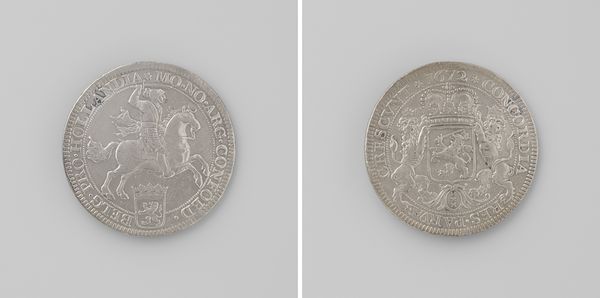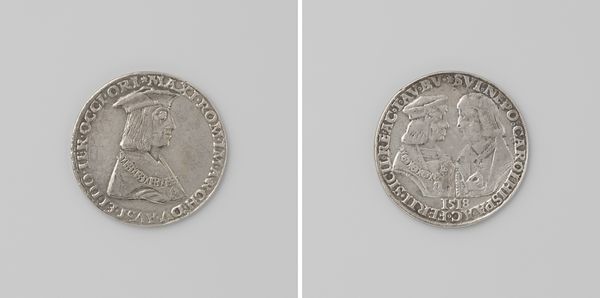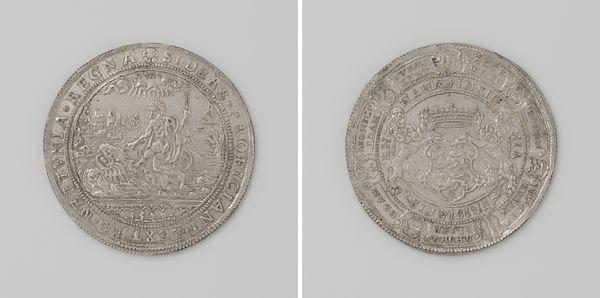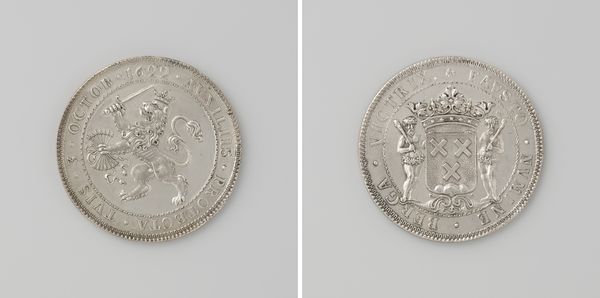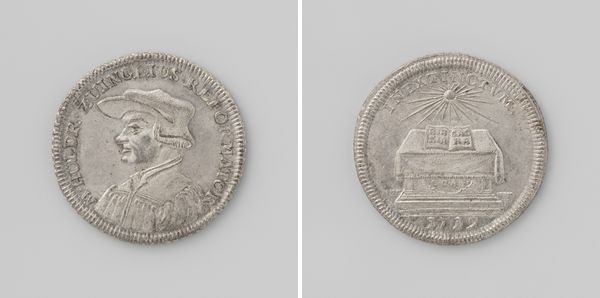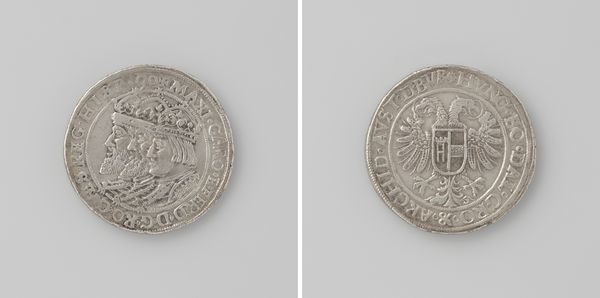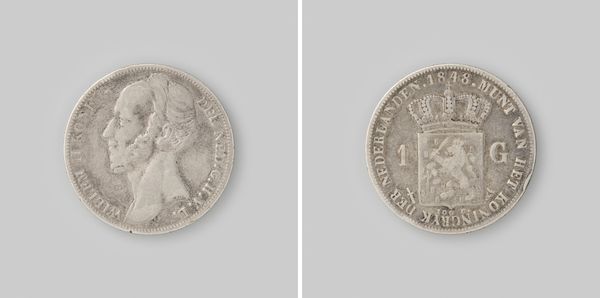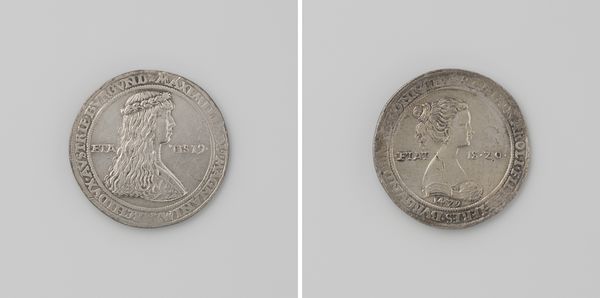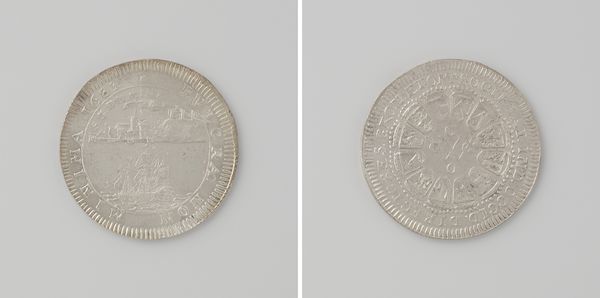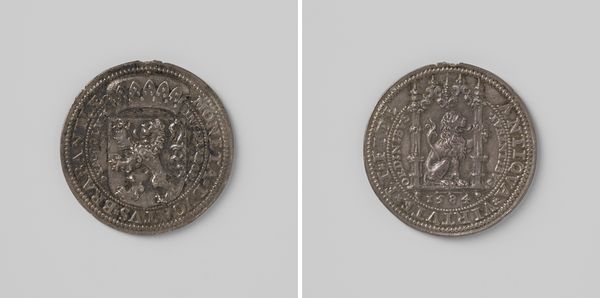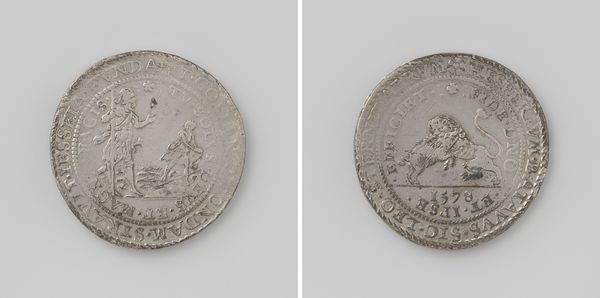
metal, sculpture
#
portrait
#
metal
#
sculpture
#
history-painting
#
realism
Dimensions: diameter 1.5 cm, weight 1.31 gr
Copyright: Rijks Museum: Open Domain
Curator: Here we have a Dutch 10 cent coin dating back to 1882, currently held at the Rijksmuseum. It's crafted from metal and features a portrait. Editor: It's fascinating how worn the coin is; you can sense its history of use in trade. The low relief and the compact size emphasize how money itself, the literal change in one's pocket, drove the monumental industrial processes of extraction and coining. Curator: Precisely. And let’s not forget the political context. This was during the reign of Willem III. The profile itself serves as a representation of power, isn't it? A potent national symbol rendered for mass production and distribution. The monarch as both ruler and figurehead. Editor: The portrait evokes traditional coin symbolism. The laurel wreath circling "10 cents 1882" seems straightforward enough, a symbol of victory or perhaps agricultural bounty. I’m wondering, what message did the designers seek to communicate using those symbols, back then, in late 19th century Netherlands? Curator: I am drawn to its material presence. The mass replication inherent to coins speaks to emerging capitalist structures, labor, the access and limits of commodity, and production on such a vast scale, something we still contend with. What stories of circulation could this object tell about access, precarity, and value? Editor: Interesting questions. Considering that the image is small and utilitarian, it nonetheless is laden with a surprising weight of symbolism. That very image served as both representation and legitimation of royal authority, yet simultaneously operated at a grassroots level for daily commerce. Curator: The sheer scale of labor— from extracting metals from mines to the mechanized process of minting. Consider also how the design of the coin, its form, enabled that replication and its ultimate dispersal. Editor: I suppose, that even this common artifact holds rich layers, weaving economic activity together with potent visual symbols of power. Curator: Yes. Its design is almost brutally simple, functional and representational all at once. Thank you, an insight that provides even more consideration of how economic materiality works and functions in people's everyday lives.
Comments
No comments
Be the first to comment and join the conversation on the ultimate creative platform.
